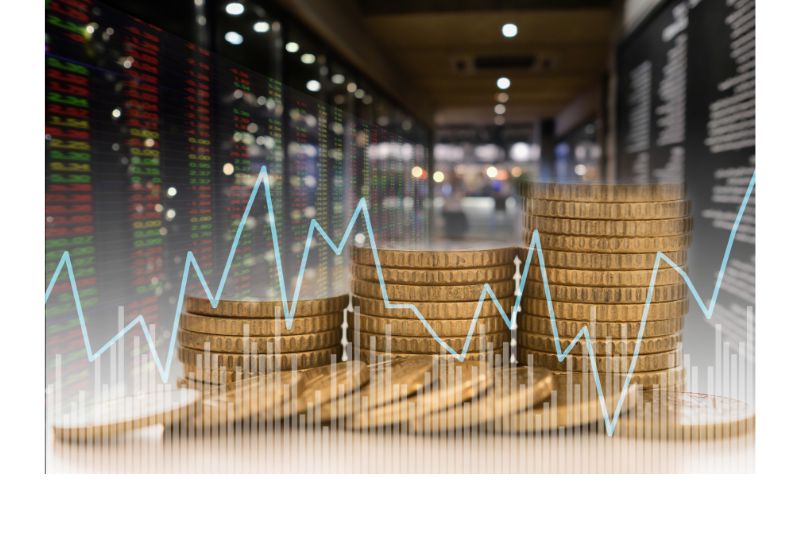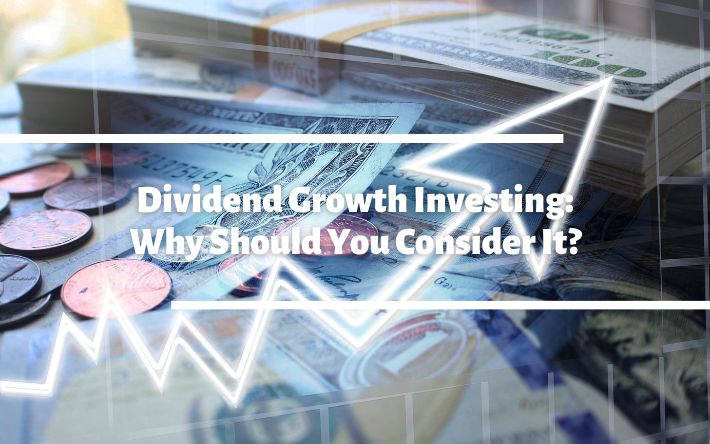Dividend growth investing entails the investments in stocks with the expectation of earning high dividends. It is not easy to pick the truly-growing assets among many stocks in the market. Besides the simplified definition, this blog covers insightful metrics to find strong stock dividends and how to win the best out of them.
What Is Dividend Growth Investing?
A dividend refers to a portion of a company’s revenues for investors every year or every quarter. Dividend growth investing simply means buying the stocks that generate increasing dividends. Companies with such dividends attract investors’ attention.
How Does Dividend Growth Investing Work?

The operation of dividend growth investing is simple as it relates to buying stocks that have increased dividends for years. Relevant factors include payout ratio, dividend coverage ratio, dividend yield, the actual growth rate, etc. as they indicate the potential growth and intrinsic values of stocks.
So, investors prefer solid firms with growing annual dividend payments. Dividend growth investing focuses on an income stream for payments thanks to potential growth in the future.
Dividend Growth Investing Strategies
This section deep dives into some crucial aspects of investing in dividend growth stocks. So, you can equip yourself with a solid foundation to initiate your investment. It entails a lot of work, yet it is worth it because of the high rewards.
Dividend Yield vs. Dividend Growth
Measuring dividend-paying companies generates insights into how dividends can increase your investing returns. A high dividend yield comes along with a relatively high proportion return on the stock price, according to common perception.
Yet, a yield that is at the top among other stocks in the same industry might not be a good dividend. It can even be a depressed price as a dividend yield is an outcome of dividing annual dividends per share by price per share.
So, a high dividend yield does not showcase the dividend power but the high company quality. You can take a look at the history of dividends to have insights and make better decisions.
Meanwhile, the dividend growth rate indicates the annual ratio of growth in a particular stock’s dividend experiences throughout a period of time. It is a key input for the models of stock valuation – dividend discount models. Many corporations aim to increase the dividends that their investors earn every year.
Steps to Invest in Dividend Growth Stocks
It is easy to join the market and purchase dividend stocks. Yet, the right how-tos can enhance the possibility of earning profits, especially amidst the tumultuous stock market. Here are recommended steps that you can take to start your investing.
- Find a dividend-paying stock on financial sites or your online broker’s website.
- Assess the stock to see whether it is a high-dividend stock through the comparison of dividend yield and the stock’s payout ratio.
- Determine the percent of your investment portfolio into each stock through the calculation of cost basis.
Dividend Payout Ratio
Dividend payout ratio (also known as payout ratio) refers to the total amount of dividends that shareholders earn to the net income of the company. The remains after paying to shareholders are for managing debt or reinvestments in primary operations.
So, what is the implication of dividend payout ratio?
First, it helps you evaluate dividend sustainability. For instance, if a company’s payout ratio is more than 100%, its shareholders earn more than what the company earns. As a result, the decrease of dividends or stop of payments is inevitable.
The future earnings expectations and the calculation of a forward-looking payout ratio are under the spotlight. Besides, it is advisable to take a look at long-term trends to confirm whether the company’s business is maturing or not.
In the meantime, the payout ratio varies according to industry. So, it is helpful information when compared to a given industry. For instance, real estate investment partnerships (REITs) must distribute more than or equal to 90% of earnings to shareholders for the sake of special tax exemptions.
Is Dividend Growth Investing Risky?

We do not deny the fact that every type of investment entails risk, and dividend growth investing is no exception. Yet, it might not endanger investors to lose their life savings. Investing is a long-term process that is only influenced by macro-financial events.
A primary factor that dividend growth investors care about the most is the interest rate. Warren Buffett calls it a nickname – financial gravity as it determines the prices of financial assets for income streams.
Firms can go through many ups and downs in their development. Thus, the drop in investors’ earnings through dividends is an inevitable fact. So, it explains why investors should keep track of their investments and news regularly.
Besides, dividend yields, relevant ratios, etc. are under the radar when picking growth stocks. Some cautious investors love to have risk-free investments so government bonds might be their picks. Yet, things can go awry so be ready, financially and mentally, for a tradeoff with dividend growth investing.
Is Dividend Growth Investing Worth It?
A big picture has both bright and dark sides. Dividend growth investing does not have risks only but also many advantages. This strategy can be useful to hedge against inflation. If the prices of products and services increase under the influence of inflation, dividends will go up. Of course, investors will benefit from such dividend growth.
The recommendation is to find a portfolio of stocks that have strong cash flows at an annual yield of around 3% to 10%. Also, companies in the sectors of energy, natural gas, food, consumer staples, etc. can earn profits from strong pricing power and cost management.
The note is to have a long-term vision of stock growth through powerful metrics and the right how-to for diversification. Fundamental analysis plays an important role in the determination of stocks that have intrinsic values for sustainable stock growth.
The Bottom Line
Bluntly, investing is risky no matter how safe assets and the status quo seem. So, dividend growth investing is not a risk-free type. Yet, it can generate high returns and effectively hedge against inflation.
So, dividend growth investing is among the popular strategies for passive income. Learning about its operation, risks, and advantages can help you better decide whether you should choose this type or not.


